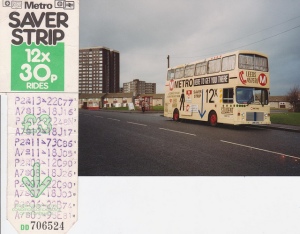Here in the UK the term ‘Kerching’ means something. In the 1990’s various bus companies introduced a pre payment system. This consisted of a strip of card with pre paid journeys on a certain route or in a particular zone or area. All you had to do was enter the bus and insert this strip into a machine by the bus driver. When you insert this strip it cuts off a bit off the ticket, at the same time a little bell used to ring – hence the term ‘Kerching’. When you looked at your ‘Kerching’ strip, it showed you how many journeys you have left, and, how many you had used.
I once visited the USA and went to Disneyland Florida where they had a similar system. In fact this system was a lifetime pass to Disney if you had certain parts of your ticket in tact. I was approached many times by people who wanted to buy my unused tickets – on the theory that I would not return to the USA and use them up.
Sonia and I include this phrase when we are wearing our executive coaching or mentoring hat. I even include this concept in our courses. In essence to ‘kerching’ someone’s bank account is to put something into their ‘feel good factor’. When you do this you will enrich that person’s experience of what you are about.
So, how do I do this?
You simply interact with them in a different way. That sounds simple – and it works. Here is one example of how you can achieve this.
When you are at the checkout at the supermarket or ANY situation where someone is wearing a name badge. Look at that name badge and make a mental note of their name. Put your purchases on the black conveyor belt and they move towards him or her. They might engage you in some conversation. They might be doing this because they are bored or they feel that’s what the supermarket wants with its customers.
So when they ask you:-
“What are you doing today?” or “Have you got everything you need today?”
Simply reply honestly by saying:-
“Well (NAME ON BADGE) Just picking up a few things on the way home from work” or something on those lines.
THEN watch their reaction – you have called them by their real name. You are no longer yet another person going through that checkout. Now you now have a personal connection with them – however slight that may me – but a connection. Works very well with staff at a restaurant – notice how attentive they become to you.
This technique can be used in all sorts of situations, the main consideration here is that the comments are well founded and are well meant. Otherwise this technique will backfire on you.
What you are doing is connecting that person directly to you. Do not take my word for it – try it yourself and you will see it works. This is a huge advantage in personal communication as well as communication in a business. This technique knows no bounds. I am sure that you will use it well.
Should you need any further examples or guidance just email me at richard@saxtonpartners.co.uk
Have a great day.

